History of Coco Mats
The original idea behind cocomats was that they were used in cars before carpeting when only rubber was on the floor. They were the original automat. The coco material acted as a kind of carpet but with the benefit that it allowed dirt and sand to filter through the coco material, so you did not see it on the top of the matting.
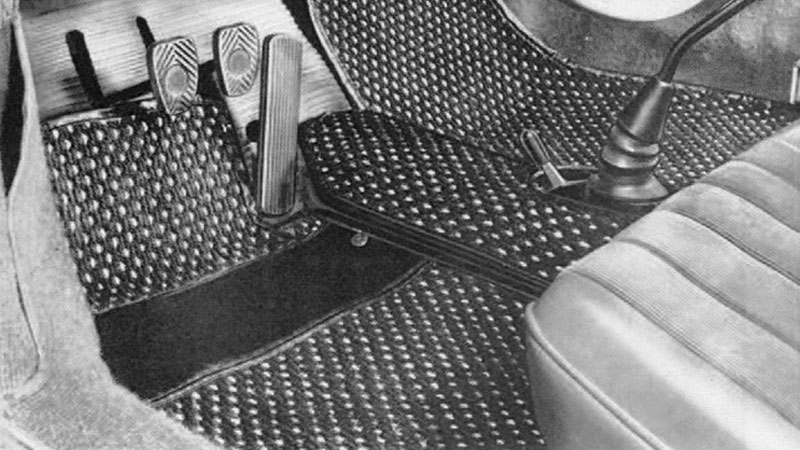
1960's — Factory Options
Cocomats were a factory option for BMW, Porsche, and Mercedes-Benz fromthe 1960s to the 1970s. These original factory cocomats came from a German manufacturer who bought its material from Southern India.
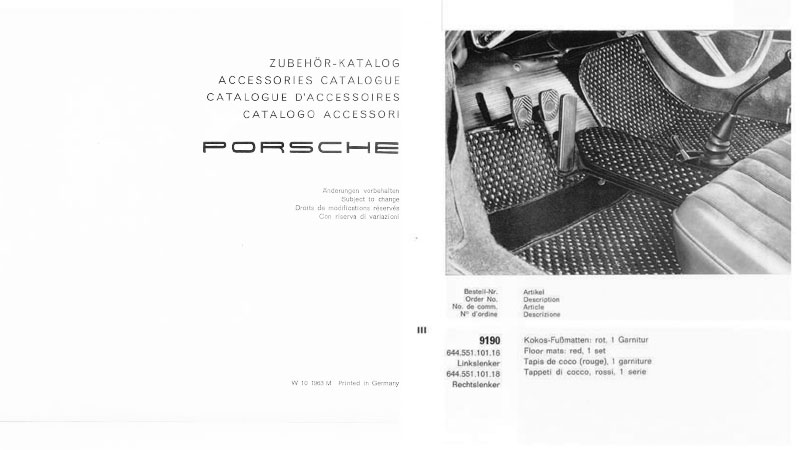
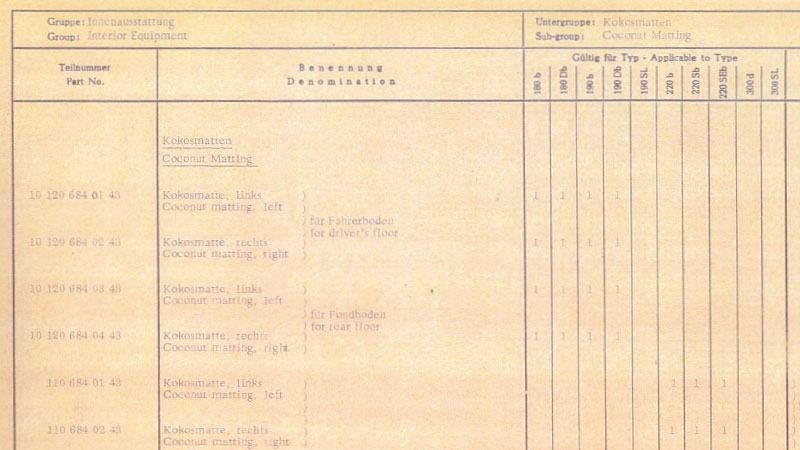
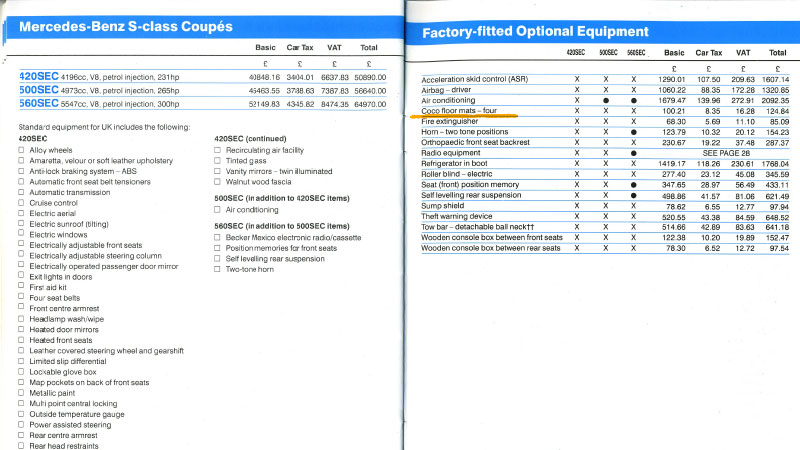
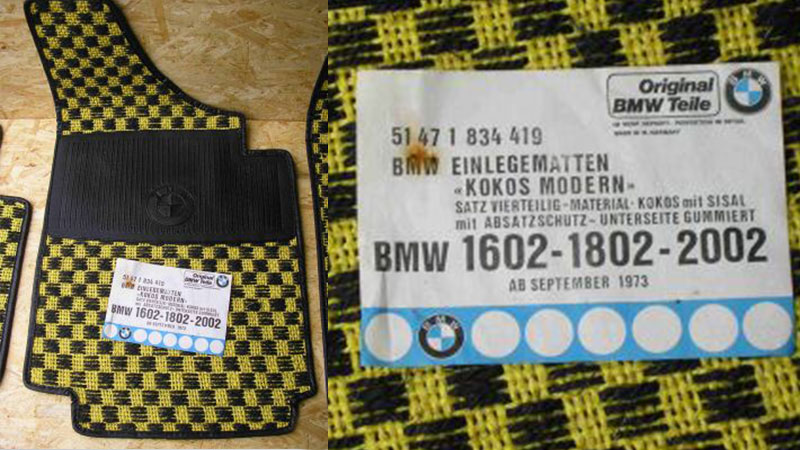
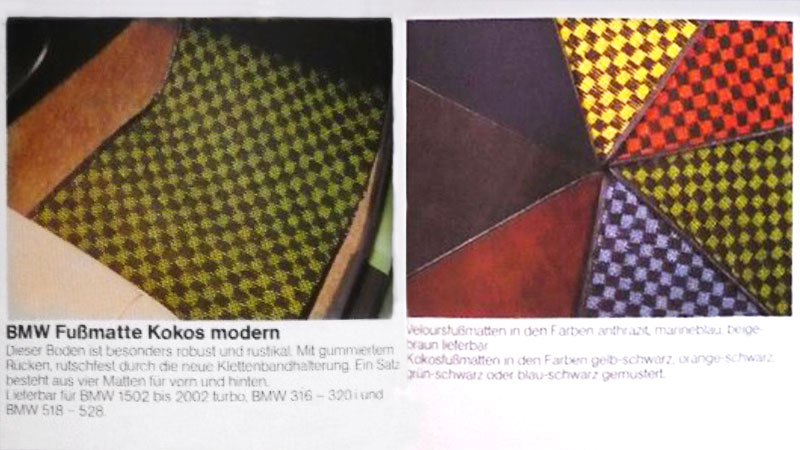
1970's — Aftermarket
During this time, there were also two US companies supplying cocomats. These cocomats were sold through used car dealers, accessories shops, and catalogs. The cocomats during this period did not include rubber backing, and their quality depended upon which manufacturer you purchased from. One of the US manufacturers was in Southern California, and one was in Illinois.
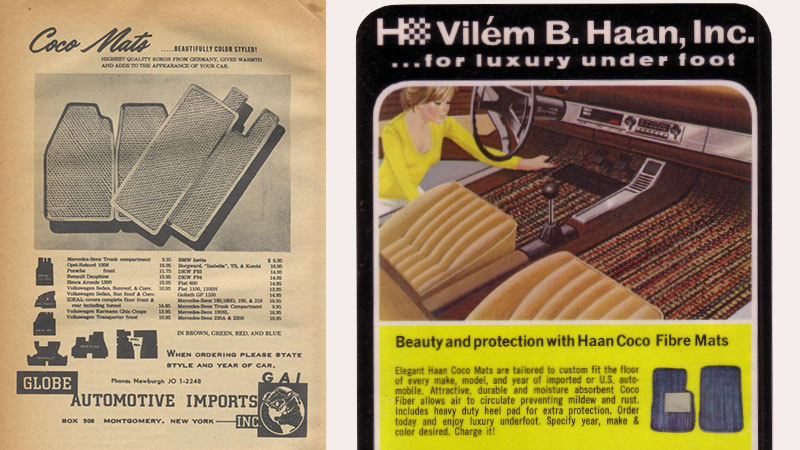
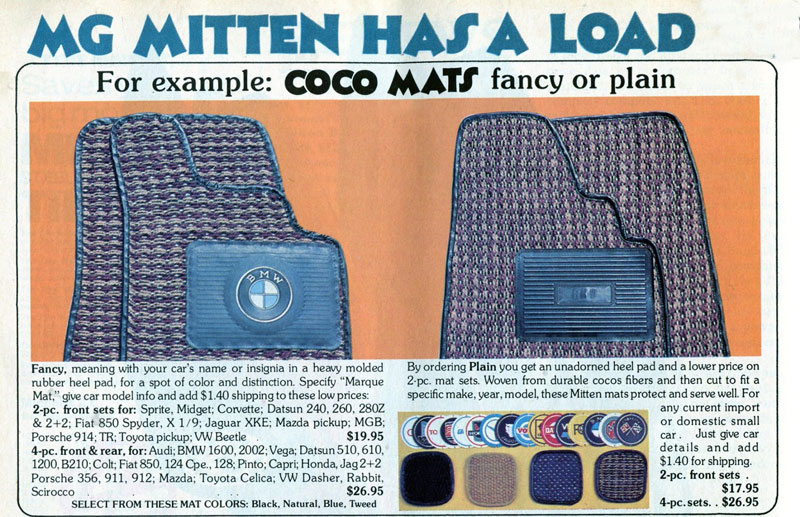
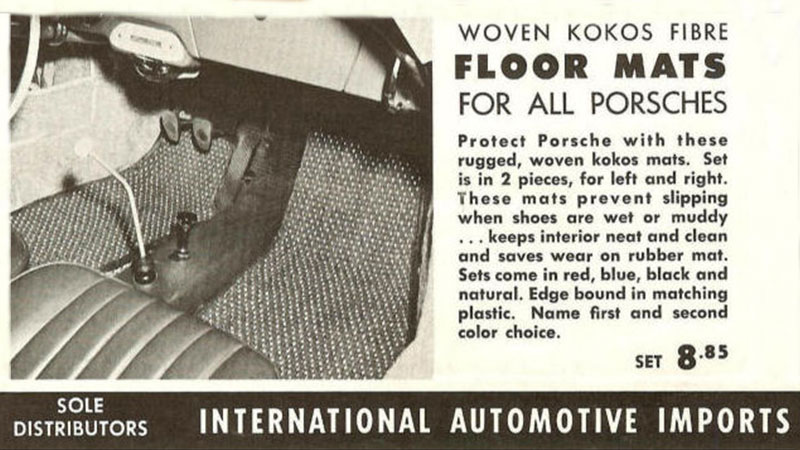
1980's — The Dormant Years
When the auto companies stopped buying cocomats by 1980, the car mat manufacturers discontinued making cocomats. From what we have discerned from customers and other suppliers, the company in Southern California went out of business due to family problems. The company in Illinois, which was later bought and moved to GA, phased out of cocomats as many other product lines were growing.
1990's — A Rebirth
Palm Fibre CocoMats was founded in 1996 out of a garage in Agoura Hills, California, by Jeff and Deborah Allwine. Jeff received the package of coco fibers, which sparked a recollection of his early 911 Porsche’s and the great look and feel of cocomats. Having determined that there was a market for a new and improved line of cocomat car mats and finding no one manufacturing them, CocoMats.com was started. A few sets of original Porsche coco mats were bought from Gary Emory at Parts Obsolete in Oregon to get the weave and colors to match the original cocomats. Contacts were made with a factory in India to purchase improved coco matting, which we still use today.
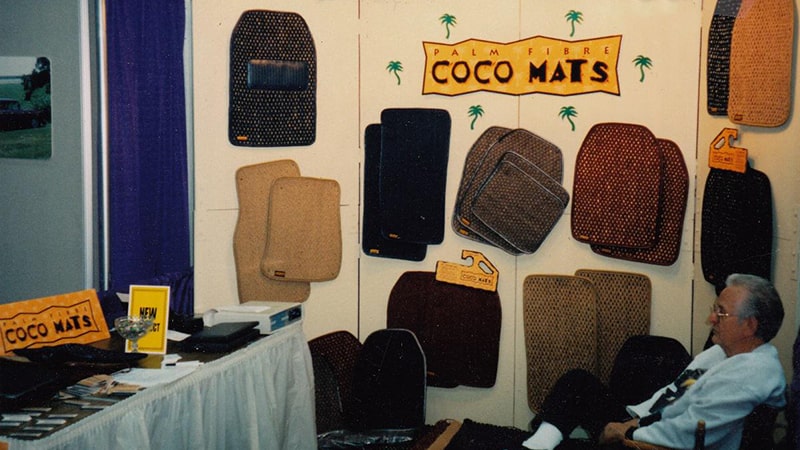
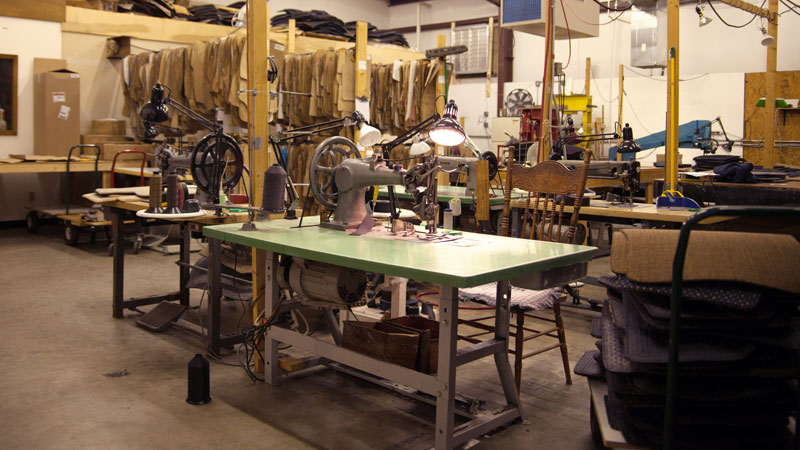
 Loading... Please wait...
Loading... Please wait...


